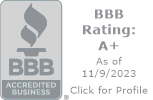
Have you looked at your lawn recently and thought, maybe it was too dry and starting to burn? Are you seeing large spreading brown spots forming on your grass? Well, there is a chance it could be chinch bugs! Chinch bugs are insects that are a relatively new problem plaguing Calgarians and eating their lawns leading people to think they are dealing with a drought and not a pest problem. Due to increasing drier conditions and climate change in Alberta, chinch bugs seem to be becoming an ever-increasing problem for homeowners.
You may have never seen or heard of a chinch bug, so what are they?
Chinch bugs are black with a white spot on their back between their wing pads. Adult chinch have white wings folded over their backs and are 4 mm in length. The nymphs have no wings and are a bright orange colour with white bands across the back. The color will change from orange to brown and finally to black, as the bug matures.
Chinch bugs like to feed on the sap from the crown and stems of turf grasses. The damage looks like it has been caused by drought and the hot sun since these bugs prefer open and sunny areas. They release a poison as they eat the grass which kills it off and creates the brown dead patches. If they continue to feed and nothing is done to stop them, they can destroy entire lawns.
The Chinch bug was first reported in 1971 in Ontario and since then has become a common lawn pest problem in many provinces. Most of the time this bug will only damage part of the lawn, only in severe cases, the entire lawn can be destroyed. the most affected areas are usually sunny exposed areas of your lawn. Chinch bugs are found throughout the US, Southern Canada, Mexico, and Central America.
The life span of this bug is typically less than one year. The adults overwinter in a dormancy state in the grass and do not become active until the temperatures are above 20 degrees celsius. At this point, they start to typically feed. The eggs are laid into the lawn and hatch anywhere from one to four weeks depending on how warm the weather is. All stages of the chinch bug are capable of doing damage to the grass. So even the little nymphs are eating the roots of the grass. Then when they mature around July, they will produce a second generation of bugs. The nymphs will continue to eat the roots under the ground and the adults will eat above-ground vegetation.
Chinch bugs can also give off an unpleasant odor when they are squished. If you walk on your lawn and you notice a distinct smell, that could be a sign you have an infestation in conjunction with the patches of brown dead grass. You can also look into the patches of dead grass by spreading it with your hands and look for black adult chinch bugs or small orange nymphs.
There are a few ways that you can help prevent chinch bugs from infesting your lawn:
- Don’t over-fertilize: According to Health Canada, Chinch bugs like lawns with excess nitrogen.
- Keep it hydrated: Chinch bugs like dry grass, water your lawn once a week fairly heavily.
- Don’t cut it too short: Keep grass between 5-7cm long which will reduce the stress on the grass.
- Aerate in the spring: Chinch bugs like to have compact soil, so aerating the lawn can help make it less inviting to them.
If you still find yourself with a chinch bug problem, call us at Absolute Pest Control! We have helped many Calgarians rid their properties of chinch bugs. Call us today for your no-obligation quote!



